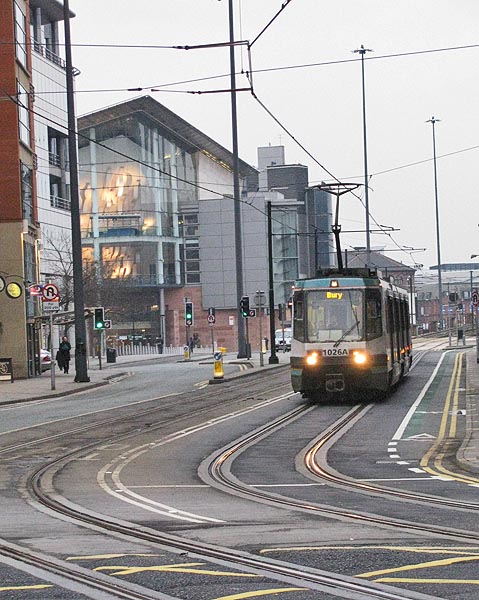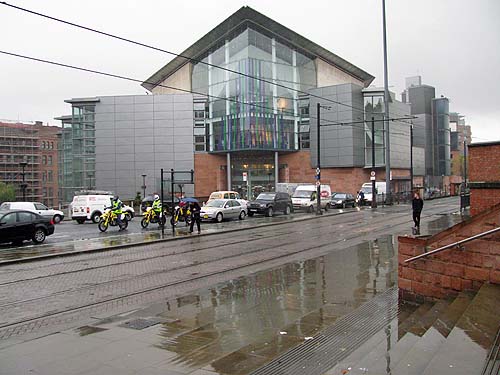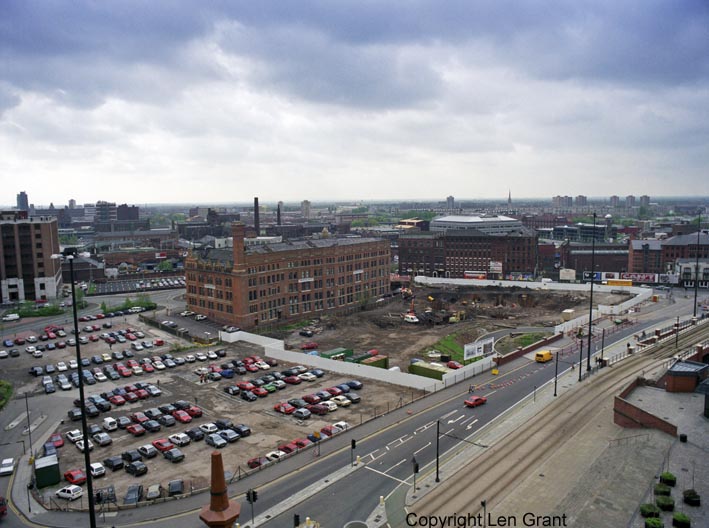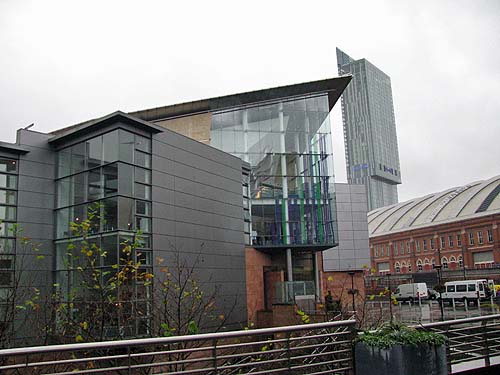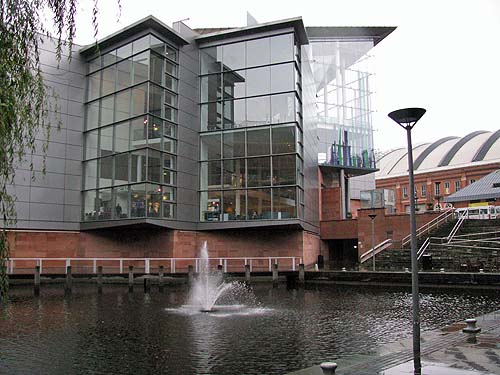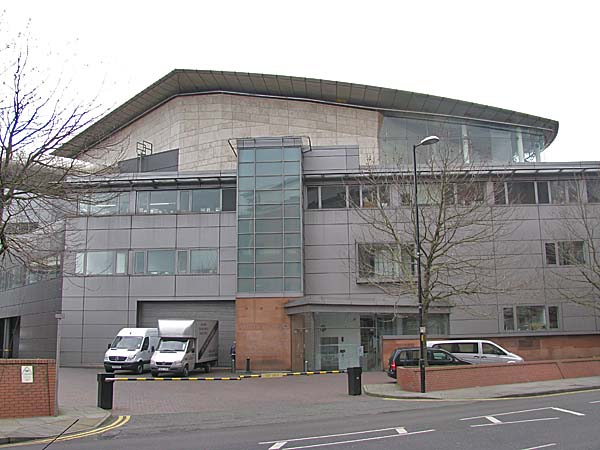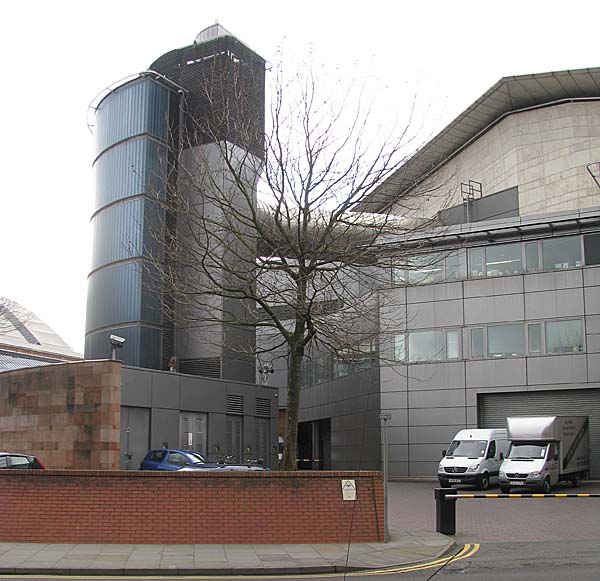| Architect |
Renton Howard
Wood Levin Rob Harris of Arup Acoustics designed the acoustics |
| Date
Built |
1996 |
| Location |
Lower
Mosley Street |
| Description |
|
| Manchester's world
famous Hallé Orchestra performed for much
of its history in the Free
Tade Hall on Peter Street. The Hallé is
Britain's longest established
professional symphony orchestra. It was
founded in Manchester by the
pianist and conductor Charles Hallé in
1858 and it gave its first
concert in the Free Trade Hall that year.
The Hallé moved to the
Bridgewater Hall in 1996. In all the building is said to have cost £42 Million and is named after the 3rd Duke of Bridgewater who commissioned the Bridgewater Canal which crosses Manchester. Ironically, the canal basin next to the hall is part of the Rochdale Canal. The public area next to the hall is called Barbarolli Square after Sir John Barbirolli, one of the Hallé's famous conductors. 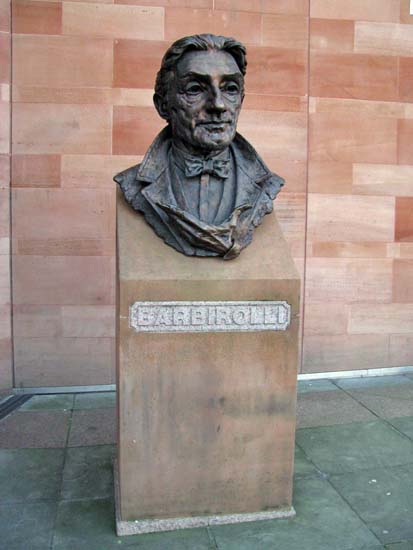 The main
auditorium sits
on an earthquake-proof isolation system
that insulates the foundation
from the superstructure and serves to
insulate the building from the
vibration of passing traffic and the
Metrolink trams. Inside is an
auditorium that seats 2,400 that is
dominated by an amazing organ which
boasts 5,500 pipes and covers the rear
wall. The Bridgewater Hall
website describes the organ thus:
"The visual impact of the auditorium climaxes in the spectacular façade of the organ, an instrument more completely integrated into the architectural and spatial composition of the space than in any other hall yet built. This remarkable £1.2 million pipe organ was designed and built by Marcussen's, a Danish family-owned company, whose traditional working methods have scarcely changed since they were established in 1806. Every joint in the massive wooden carcass was cut by hammer and chisel, and the swell boxes and casework are as beautifully crafted as hand-made furniture. Taking three years to design and build and eighteen weeks to voice - the process which ensures that the pipes in each rank speak with the same 'family accent' - The Bridgewater Hall organ is a major work of art and technology, More than 42 feet high and 45 feet wide, it weighs a mighty 22 tons. With 76 stops, a battery of Trompettes en Chamade, 5,500 pipes of tin and lead, copper and pine ranging in size from 2 inches to 32 feet in length (the largest weighs over 300 pounds) this splendid instrument is destined to become one of the great recital organs of northern Europe." |
|
|
The Bridgewater Hall - Lower Mosley
Street,
Manchester, UK
In the image below, shown here with
the
generous permission of Len Grant,
you can see the ground preparation stage for the
construction of the
hall.
A huge, highly polished Touchstone stands close to the entrance doorway. It was created by the sculptor Kan Yasuda. 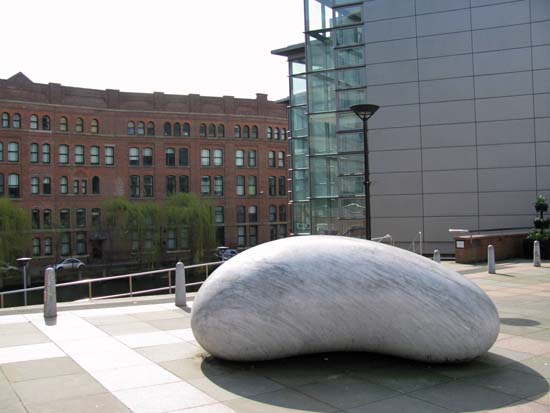 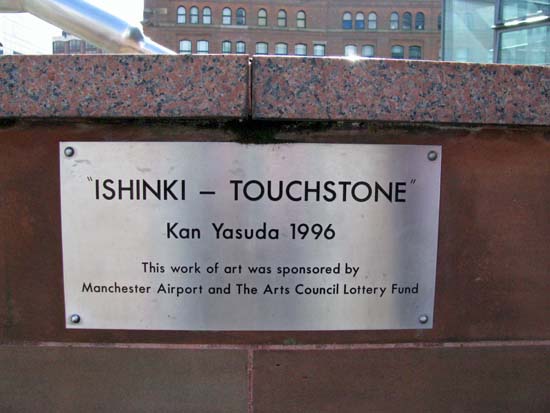 |
